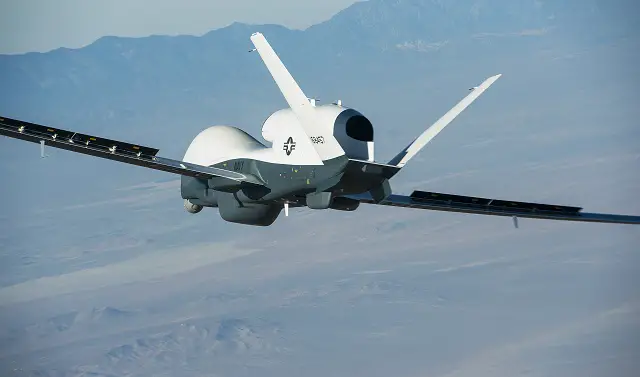Breaking news
U.S. Navy MQ-4C Triton Unmanned Aircraft System Completes First Flight.
| 2013
| |
|||
| a | |||
Naval
Forces News - USA |
|||
U.S. Navy MQ-4C Triton Unmanned Aircraft System Completes First Flight |
|||
The
US Navy's newest unmanned Intelligence, Surveillance and Reconnaissance
(ISR) aircraft platform, the MQ-4C Triton Unmanned Aircraft System (UAS),
completed its first flight from Palmdale, Calif. May 22, marking the
start of tests which will validate the Northrop Grumman-built system
for future fleet operations. |
|||
 Link to MQ-4C Triton datasheet PALMDALE, Calif. (May 22, 2013) The Northrop Grumman-built Triton unmanned aircraft system completed its first flight from the company's manufacturing facility in Palmdale, Calif. The one an a half hour flight successfully demonstrated control systems that allow Triton to operate autonomously. Triton is specially designed to fly surveillance missions up to 24 hours at altitudes of more than 10 miles, allowing coverage out to 2,000 nautical miles. The system's advanced suite of sensors can detect and automatically classify different types of ships. (U.S. Navy photo courtesy of Northrop Grumman by Bob Brown/Released) |
|||
During
the 80-minute flight in restricted airspace, the MQ-4C Triton unmanned
aircraft, controlled by ground-based Navy and Northrop Grumman personnel,
reached 20,000 feet altitude. "This flight represents a significant milestone for the Triton team," said Rear Adm. Mat Winter, who leads the Program Executive Office for Unmanned Aviation and Strike Weapons at Naval Air Systems Command, Patuxent River, Md. "The work they have done and will continue to do is critical to the future of naval aviation, particularly to our maritime patrol and reconnaissance community." The MQ-4C Triton provides the fleet with a game-changing persistent maritime and littoral ISR data collection and dissemination capability, said Winter. It will be a key component of the Navy's Maritime Patrol and Reconnaissance Force family of systems. As an adjunct to the manned P-8A Poseidon, the MQ-4C Triton will be a major part of the military's surveillance strategy for the Asia and Pacific regions. The Triton will fly missions for 24 hours at altitudes greater than 10 miles, allowing the system to monitor 2,000 nautical miles of ocean and littoral areas at a time. The P-8A Poseidon is the Navy's new multi-mission maritime aircraft being built to replace the P-3C Orion long-range anti-submarine warfare aircraft. "When operational, the MQ-4C will complement our manned P-8 because it can fly for long periods, transmit its information in real-time to units in the air and on ground, as well as use less resources than previous surveillance aircraft," said Rear Adm. Sean Buck, Patrol and Reconnaissance Group commander, who also witnessed today's flight. "Triton will bring an unprecedented ISR capability to the warfighter." The MQ-4C Triton UAS will be based at five locations around the globe. Triton operators will disseminate data in real-time to fleet units to support surface warfare, intelligence operations, strike warfare and search and rescue. "Our goal is to mature the Triton UAS before supporting the Navy's maritime ISR mission," said Capt. Jim Hoke, program manager for the Persistent Maritime UAS office (PMA-262), which oversees the Triton program. "The data we collect the next few years is essential to certify the system for operational use." Flight tests will continue in California for the next several months before the team transitions the aircraft to Patuxent River in the fall. From Naval Air Systems Command Public Affairs |

























